The Montana Lynx, also known as the Canadian Lynx or Canada Lynx, introduces us to nature’s wild and beautiful side. This cat thrives across the state’s varied landscapes.
Today, we’ll discuss what makes the Montana Lynx unique, from its physical traits to the vast, snowy habitats it calls home. We’ll also cover its impressive hunting abilities, how it adjusts to its surroundings, and the important role of snowshoe hares in its diet.
- Related article: Observing Montana Wildlife
Curious about where you can spot these majestic creatures? We’ll lead you to the prime locations in Montana, including the expansive landscapes of Glacier National Park, where the Lynx find sanctuary.
Come along as we explore the realm of the Montana Lynx — a story of resilience, beauty, and the ongoing journey toward coexistence.
6 Key Takeaways on the Montana Lynx
- With its distinctive features, the Montana Lynx thrives in the state’s vast and rugged landscapes. They are well adapted to the cold, snowy winters.
- Canada Lynx and Bobcats are similar, but they differ in appearance. Canada Lynx have longer legs, while the Bobcats’ legs are shorter.
- The Canada Lynx’s survival is threatened by habitat loss caused by fire, logging, and trapping.
- The main food source for Canada Lynx during winter is the Snowshoe Hare. The populations of Canada Lynx are dependent on the populations of Snowshoe Hare.
- Female lynx play a vital role in reproduction, and they have unique adaptations to ensure the survival of their young in challenging environments.
- Conservation efforts for lynx in Montana include lynx habitat protection and trapping regulations.
About the Montana Lynx
With its distinctive tufted ears and sharp eyes, the Montana Lynx is perfectly adapted to Montana’s rugged landscapes. The state’s vast forests and mountainous terrains provide the ideal habitat for this wild cat.
1. Physical Characteristics of Lynx
When you spot a Montana Lynx, you see a medium-sized cat with fascinating features. So, what makes these creatures stand out in the wild:
- Size and Colors – Male lynx typically weigh around 10 kilograms, while females weigh around 8 kilograms. Their upper parts are covered in silver-gray to grayish-brown fur, while their belly and throat are white.
- Body – Canada Lynx have long legs and a compact body, which allows them to be agile in their snowy habitats.
- Facial Ruff – Encircling their face, the Canada Lynx’s ruff is longest beside the snout with striking black markings.
- Ears and Eyes – Lynx have ears 70 to 80 millimeters long and tipped with a 30-millimeter black tuft. The tufts on their ears help direct sound waves, enabling excellent hearing. They also have exceptional eyesight, spotting a mouse 250 feet away.
- Feet and Tail – The Canada Lynx has large, round, heavily furred feet that act as natural snowshoes. The animal has a short tail with an all-black tip.
Canada Lynx and Bobcats have some similarities but differ in appearance:
| Characteristic | Canada Lynx | Bobcat |
|---|---|---|
| Appearance | Canada Lynx are leggier and grayer with less distinctive spotting. | Bobcats are shorter and have a more spotted appearance. |
| Ear Tufts | Canada Lynx have longer ear tufts. | Bobcats have shorter ear tufts. |
| Feet Size | Canada Lynx have much larger feet. | Bobcats have smaller feet. |
| Tail Tip Color | Canada Lynx’s entire tail tip is black. | Bobcats’ underside of the tail tip is white. |
| Hind Leg Color | Canada Lynx has a light beige hind leg. | The bobcat’s hind leg is black. |
It’s also easy to mistake a young Mountain Lion for a Lynx, but their longer bodies and tails give them away. These unique features show how these animals survive in their environment.
2. Lynx Habitat
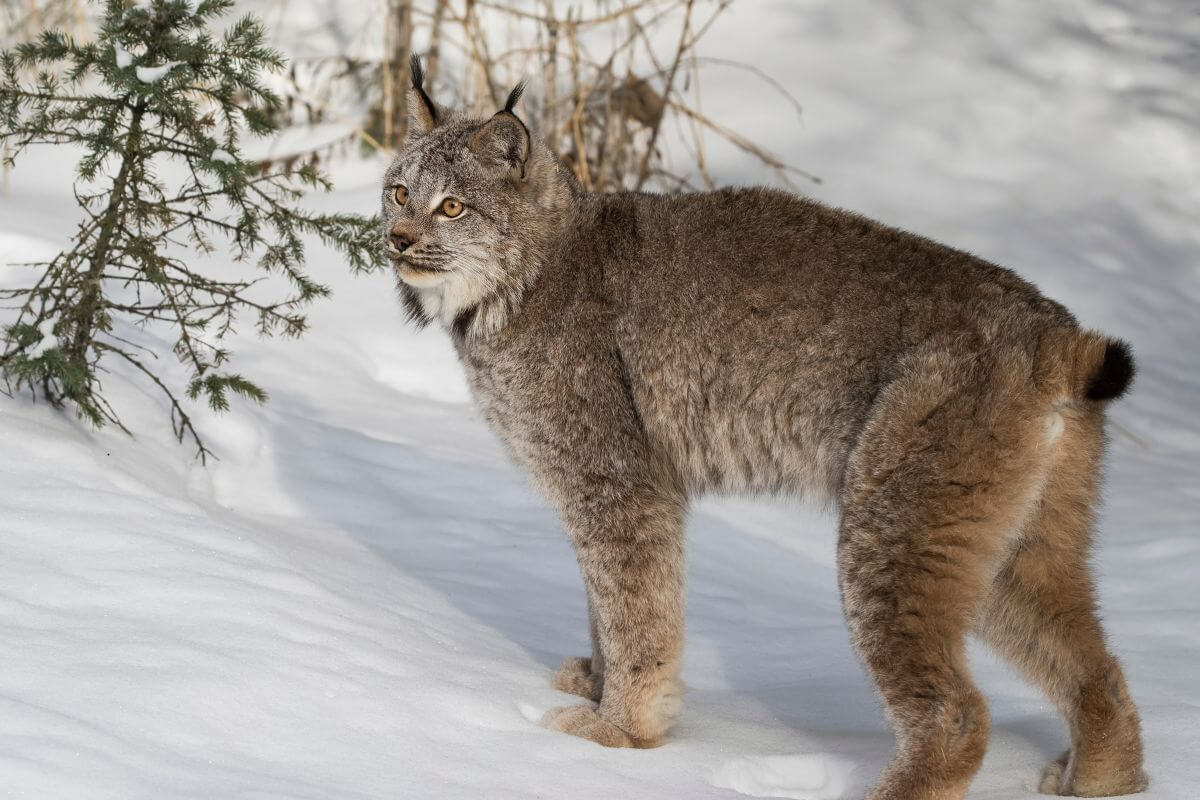
The Montana Lynx thrives in specific habitats that meet their unique needs. These cats prefer areas with cold, snowy winters and plenty of snowshoe hares to hunt. Let’s dive into what makes a perfect lynx home:
- Main Habitat – Moist boreal forests with cold winters and a lot of snow, making it easier for lynx to hunt hares. These forests are mostly made up of spruce trees.
- West of the Continental Divide – Subalpine forests are the go-to places for lynx.
- Extreme Northwestern Montana – Here, you’ll find cedar-hemlock habitats, which also suit the lynx.
- East of the Continental Divide – Higher elevations with subalpine fir forests are where lynx live. In the Garnet Range, sub-alpine fir forests are the primary lynx homes.
- Secondary Habitats – Lynx can find suitable living areas and hunting grounds where Englemann spruce, Douglas fir, and lodgepole pine are present.
- Home Features – Lynx looks for places with dense covers for hunting and security. They use dens in trees, under stumps, or thick brush for resting and birthing. They avoid large open areas and only cross small openings.
Lynx are mostly loners, but you might see them in small groups sometimes. Their biggest challenges are habitat loss from fires, timber harvest, and being caught in traps. This focuses on protecting these specific habitats to ensure the survival of the beautiful Montana Lynx.
3. Lynx Food Habits
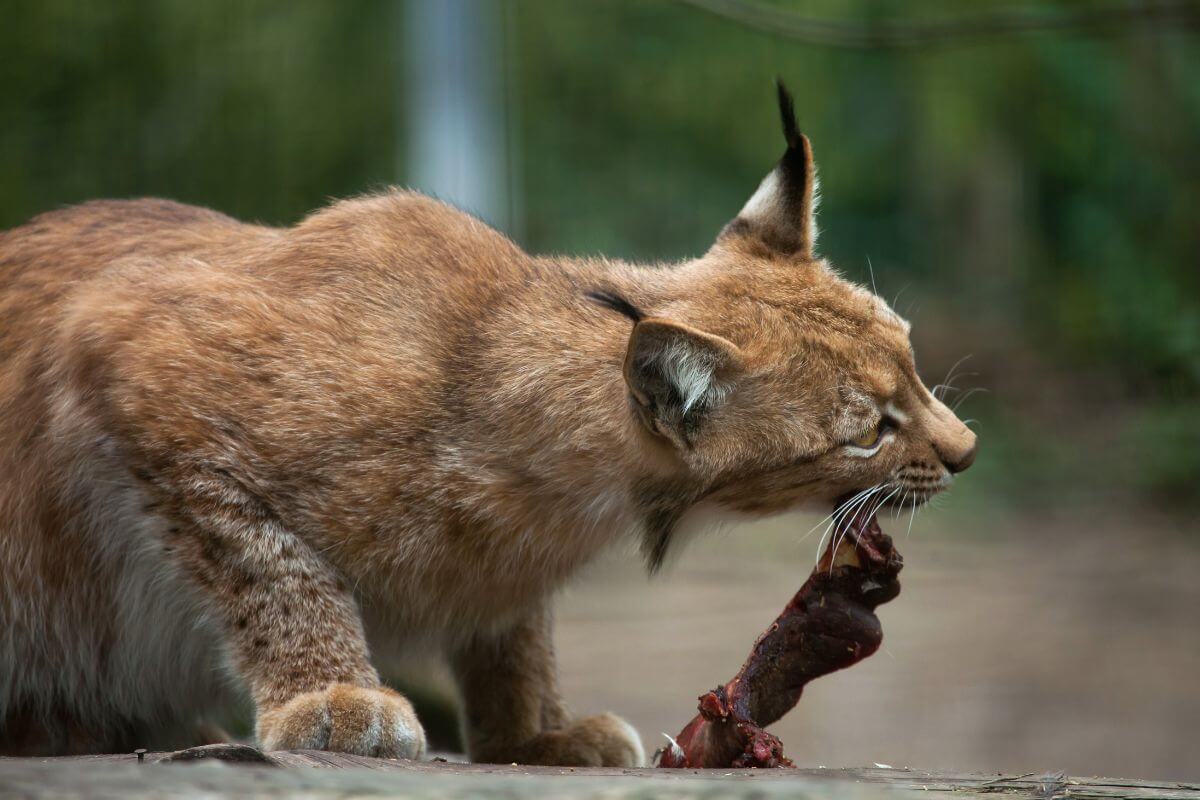
Montana’s lynx are masters of the winter forest. The Snowshoe Hare is their primary food source during the cold months, making up 35% to 97% of their diet. Red Squirrels become an important meal when these hares are hard to find. In summer, what they eat becomes a bit of a mystery, but it’s likely a mix of different foods.
Compared to Lynx in other places, Montana’s Lynx has to change its menu more often. This is because fewer Snowshoe Hares are around, and they must share with other forest carnivores. This means Montana’s lynx hunts a broader range of animals year-round.
Here’s a look at what else is on the menu for Montana’s lynx:
- Grouse
- Northern Flying Squirrels
- Ground Squirrels
- Porcupines
- Beavers
- Mice, Voles, Shrews
- Occasionally, they eat ungulates or what’s left of an animal killed by another.
These animals are not just food for the lynx. They also show us how lynx adapt their hunting to what’s in their environment. This flexibility is key to their survival and shows the smart hunting activities of lynx in Montana.
4. Ecology of Lynx
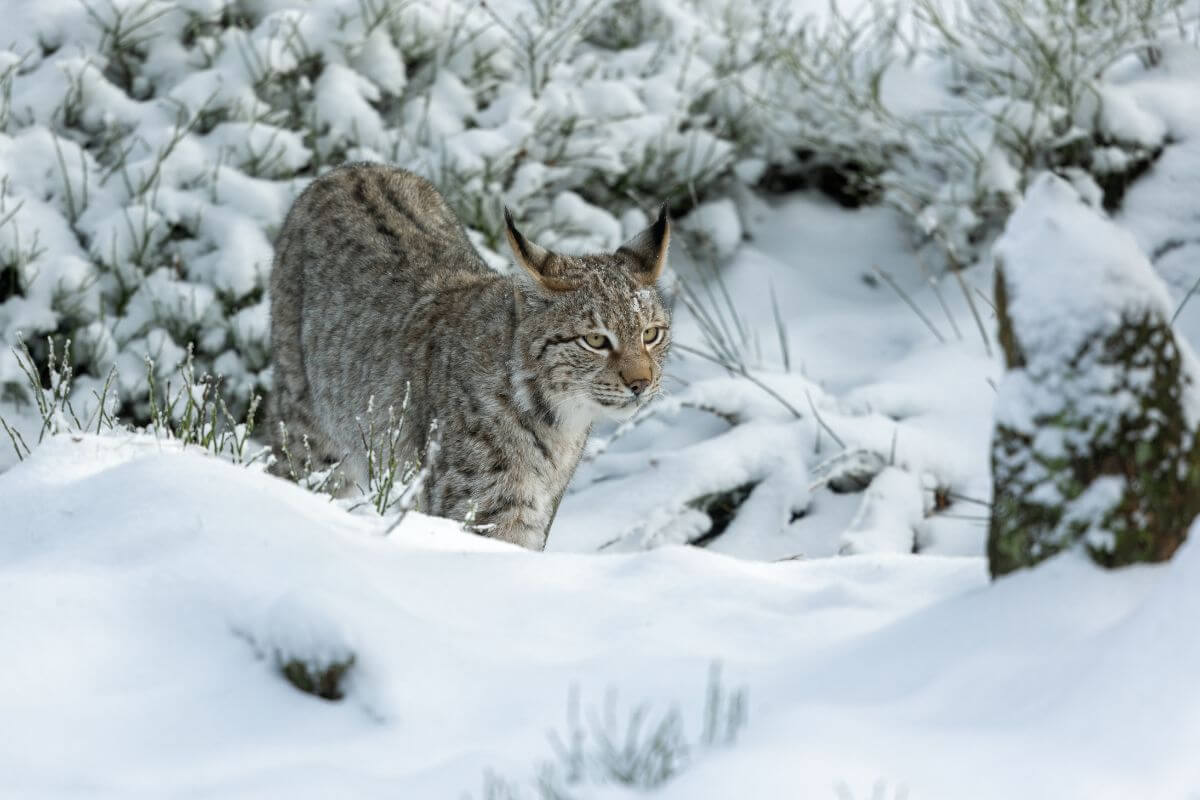
The ecology of the Montana Lynx is an interesting tale of adaptation to local conditions. The story of Canadian Lynx populations takes a different turn than their northern counterparts. While the populations in the north are intricately linked to the rise and fall of Snowshoe Hare populations, the situation in Montana is distinct.
Here’s a look at how the Montana Lynx makes its home in a more varied landscape:
- Population Dynamics – The populations of Snowshoe Hares in Montana affect the Lynx, but not as significantly in the southern extent as in the north. This difference means that Montana’s Lynx has to deal with larger home ranges to find enough food and space.
- Home Is Where the Hunt Is – Lynxes have different home ranges, ranging from 12 to 83 square miles (19 to 134 square km). These sizes depend on various factors, including snowshoe hare abundance, the Lynx’s age and gender, the time of year, and the number of Lynx around. When food is scarce, home ranges get bigger to ensure survival and reproduction.
- Variability in Home Ranges – Home ranges across North America show a lot of variability, especially when the densities of Snowshoe Hare are low. In general, male lynx have larger home ranges than females.
- Territorial Tales – According to some studies, male Lynx tend to stick to areas where only males are present, while females inhabit separate territories. However, other research shows that territory overlap is common, both within the same sex and between male and female Lynx.
- Meeting the Neighbors – Where Lynx and Bobcats share territory, there is overlap in home ranges. However, Bobcats tend to stay at lower elevations in winter, giving Lynx more space in the higher regions.
Montana’s Lynx are a beautiful species that have adapted to their changing environment. The changing landscape has affected their survival strategies and home ranges, but they have remained resilient when faced with environmental challenges. This is an important insight into how they have evolved and adapted to their surroundings.
5. Lynx Reproductive Characteristics
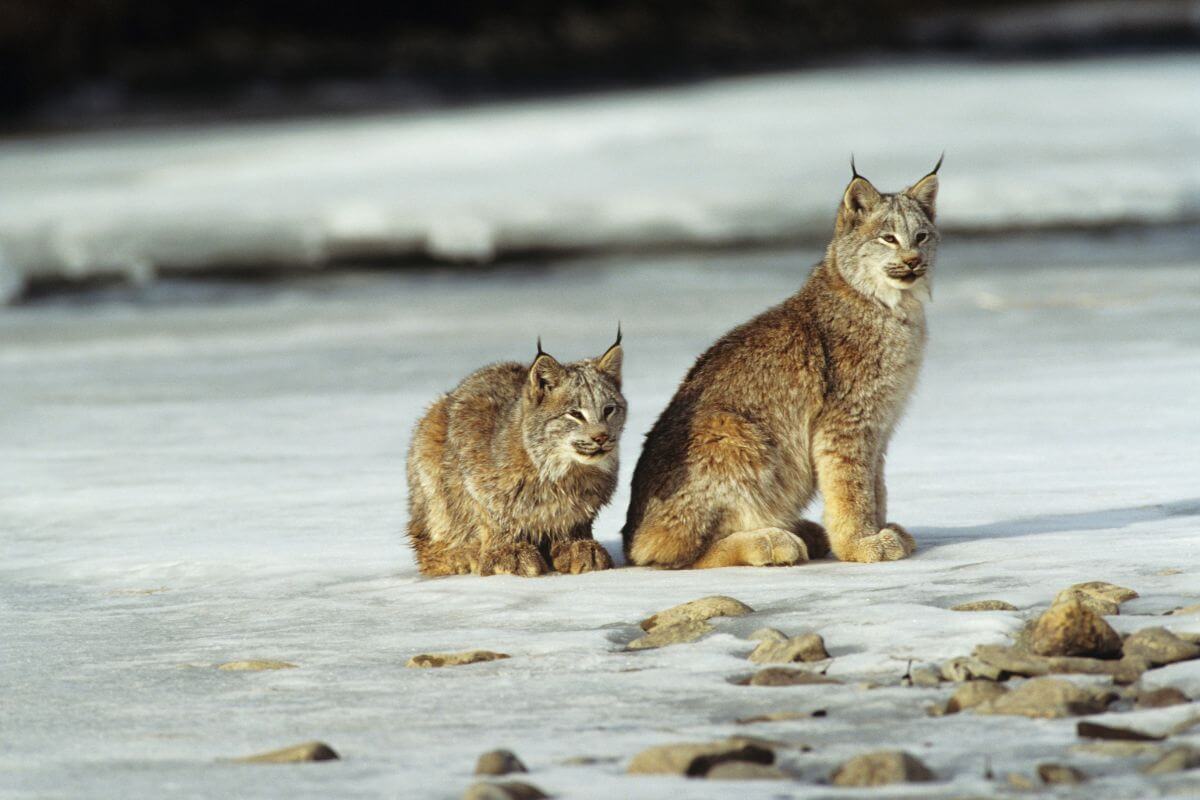
Female lynx play a crucial role in the reproductive cycle of the species. Here’s a look at the reproductive characteristics of the Montana Lynx:
- Breeding Season – In Montana, female lynx breed primarily in March and April, beginning their reproductive journey.
- Gestation Period – After mating, the female lynx carries the offspring for 62 to 74 days. This period is when the young ones develop before birth.
- Litter Size – A typical lynx litter ranges from 3 to 4 kittens. This robust litter size is an adaptation to their challenging environment.
- Parental Care – Unlike some other animal species, male lynx do not participate in raising the young. The mother’s sole responsibility is to nurture and protect her offspring.
- Reproductive Cycle – Adult female lynx have a unique reproductive cycle. They usually have one litter every 1 to 2 years. The young lynx stay with their mother for an extended period, often until they are ready to mate or longer. This close bond is essential for the survival and growth of the kittens.
- Adaptations to Prey Scarcity – The breeding cycle is affected when food is scarce. In such conditions, most of the young may not survive. This natural mechanism helps balance the lynx population’s status and available resources.
- Variations in Birth Rates – Some female lynx start reproducing at a younger age, particularly when the Snowshoe Hare population (their primary prey) is high. However, their reproduction ability is not as high as older females.
Understanding these reproductive characteristics is vital to appreciating how female lynxes in Montana ensure the survival of their species in challenging conditions.
6. Conservation of Lynx
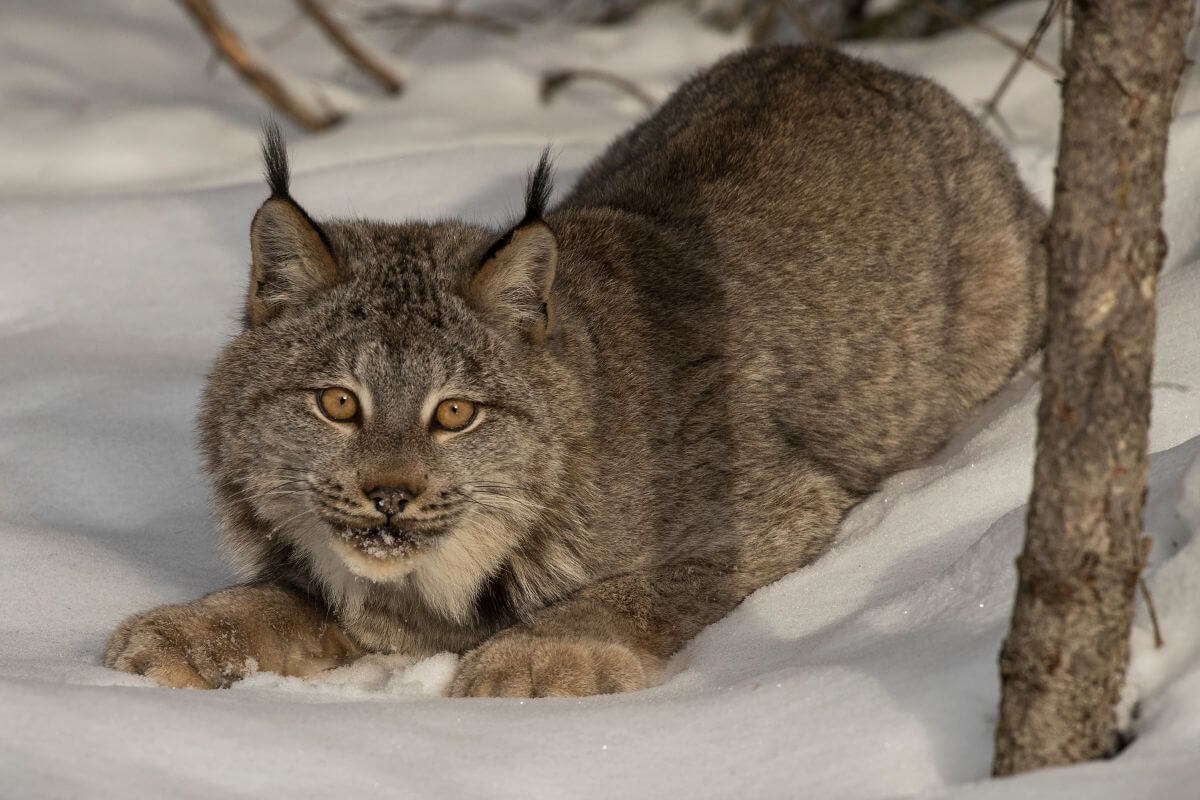
The conservation of lynx is a critical issue. This is because the Canada Lynx was listed as Threatened under the Endangered Species Act in 2000 by the U.S. Fish and Wildlife Service. This designation brought about specific actions to protect the lynx and its habitat, including in Montana.
Here are the key points to know about lynx conservation efforts in the state:
- Designation of Critical Habitat – Initially done in 2006 and revised in 2009 and 2014, the critical habitat covers significant areas of northwestern Montana and the region around the Greater Yellowstone Ecosystem. This is vital for the survival and well-being of the lynx.
- Trapping Regulations – While the Canada Lynx is classified as a furbearer in Montana, trapping them is currently prohibited. If a lynx is accidentally trapped and is uninjured, it must be released immediately. The trapping incident must also be reported to Montana Fish, Wildlife & Parks. This swift action helps protect lynx populations.
- Lynx Protection Zones – The 2023 Wolf and Furbearer Regulations introduced Lynx Protection Zones (LPZs) to safeguard Lynx further. These zones have specific rules to prevent the incidental capture of lynx, including special restrictions on trap types and using certain bait materials.
Here are some key regulations within the LPZs aimed at protecting lynx and reducing their potential capture:
- No wolf snaring on public lands within LPZs
- Wolf foothold traps in regions 1 through 5 must meet a minimum pan tension requirement
- No visually attractive materials such as natural feathers or pieces of fur can be used for lynx in traps
- Regular trap checks every 48 hours
- Restrictions on conibear trap use
- Mandatory relaxing locks on all snares
These rules are designed to reduce the accidental trapping of lynx, showing Montana’s commitment to conserving this iconic species. Whether through habitat protection or specific trapping guidelines, the state is actively involved in ensuring the survival of the Canada Lynx.
Where to See Lynx in Montana
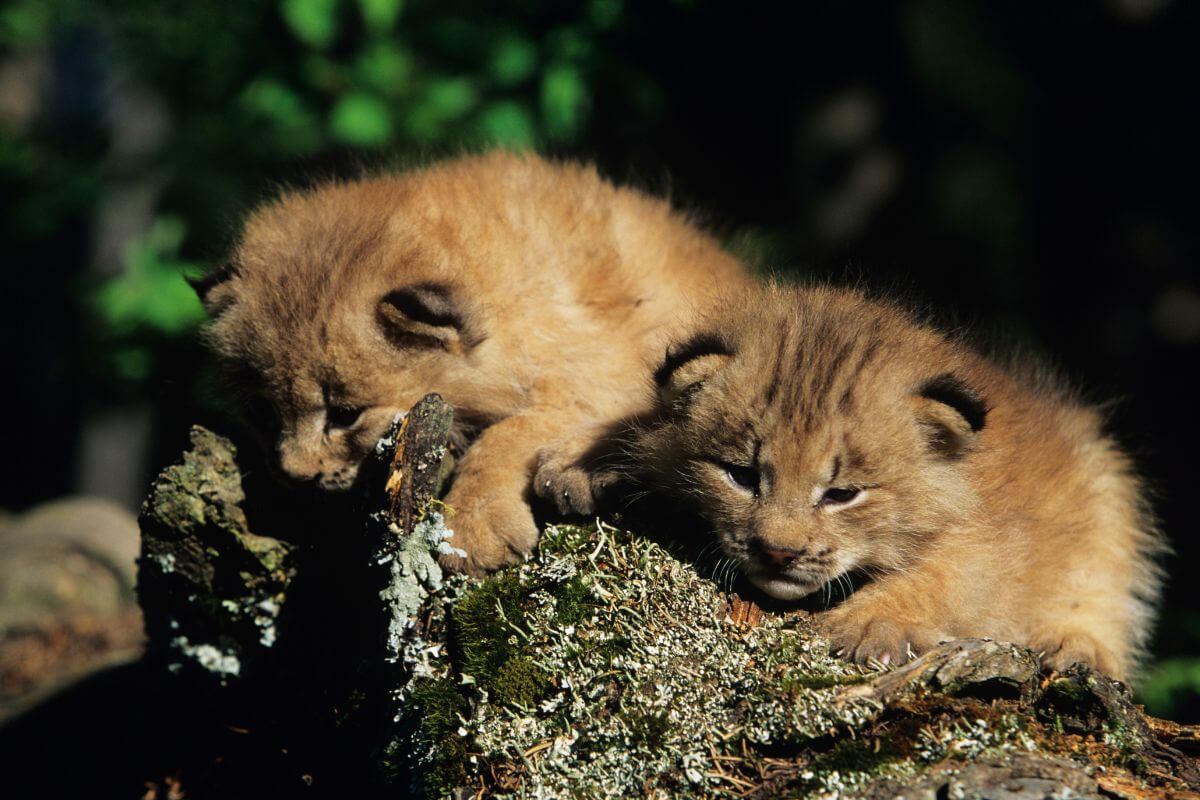
Many nature enthusiasts dream of spotting a lynx in the wild. The elusive cat roams certain areas in Montana, offering lucky observers a glimpse into its mysterious life. Knowing where to look increases your chances of witnessing this beautiful creature in its natural habitat.
Glacier National Park – Best Place to Spot Lynx in the Wild
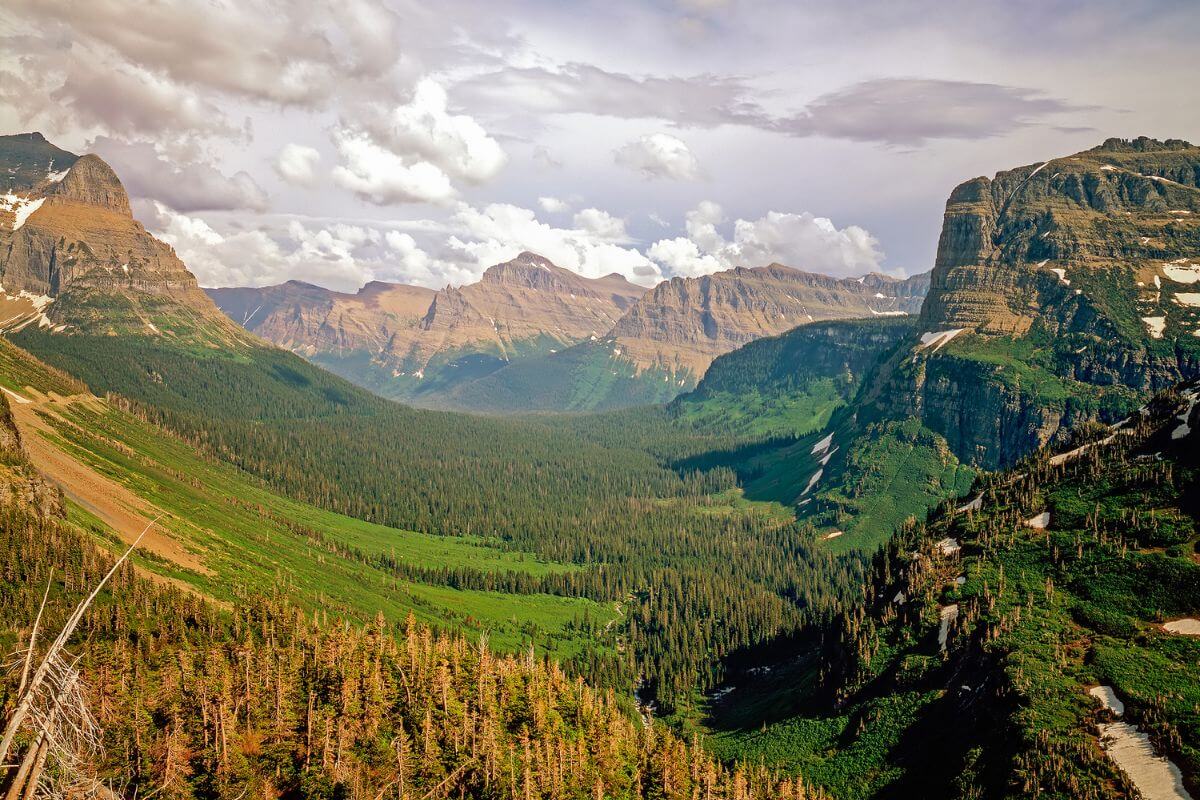
Glacier National Park stands out as a vital refuge for the Canada lynx, a species uniquely adapted to cold environments and facing threats to survival. One of the largest protected areas where lynx are found in the contiguous United States, this park plays a crucial role in recovering the Northern Rockies lynx.
Lynx distribution in Glacier National Park during summer concerns various factors. The presence of these elusive cats is closely tied to the abundance of their primary prey, the snowshoe hare. It also depends on the specific types of forests, the local climate, and the area’s fire history.
Approximately 16% of the Northern Rockies’ critical habitat unit is here, making Glacier National Park one of the significant national parks supporting a lynx population. This highlights the lynx’s natural history and unique relationship with protected areas like Glacier National Park.
ZooMontana – Best Place to Observe Lynx in Captivity
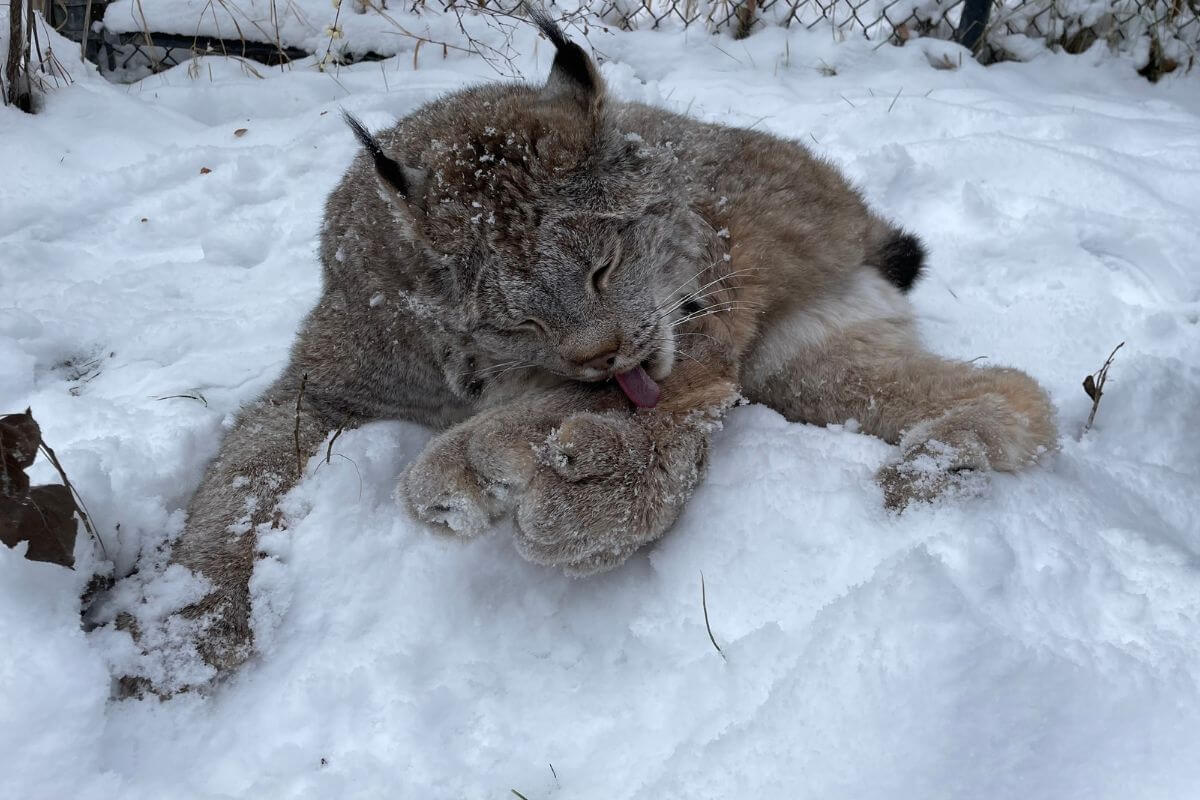
| Attribute | Description |
|---|---|
| Location | Billings, Montana |
| Size | 70 acres |
| Animals | Nearly 100 from 58 different species |
| Focus | Creating habitats that look and feel like home for each animal |
ZooMontana in Billings is a special place. It’s not just a zoo, it’s also a 70-acre botanical park. What makes it even more unique? It’s the only zoo and botanical park in the entire state.
When you visit ZooMontana, you will see their only lynx present, Fierca. She was born on May 1, 2011, and came to the zoo in 2014. But her story starts even before that.
Fierca was raised by a family that used to teach kids about animals. This early life made her comfortable around people and other animals. When the family had to move and couldn’t continue the programs, Fierca found a new home at ZooMontana.
At the zoo, Fierca is part of the Animal Ambassador program. This means she’s had special training to walk on a leash and wear a collar. You might see her taking a stroll with her trainers.
She’s a star at school programs, showing how awesome Lynxes are. Thanks to her early life and training, she’s great with groups of all sizes, spreading knowledge and love for her species.
Montana Lynx Final Thoughts
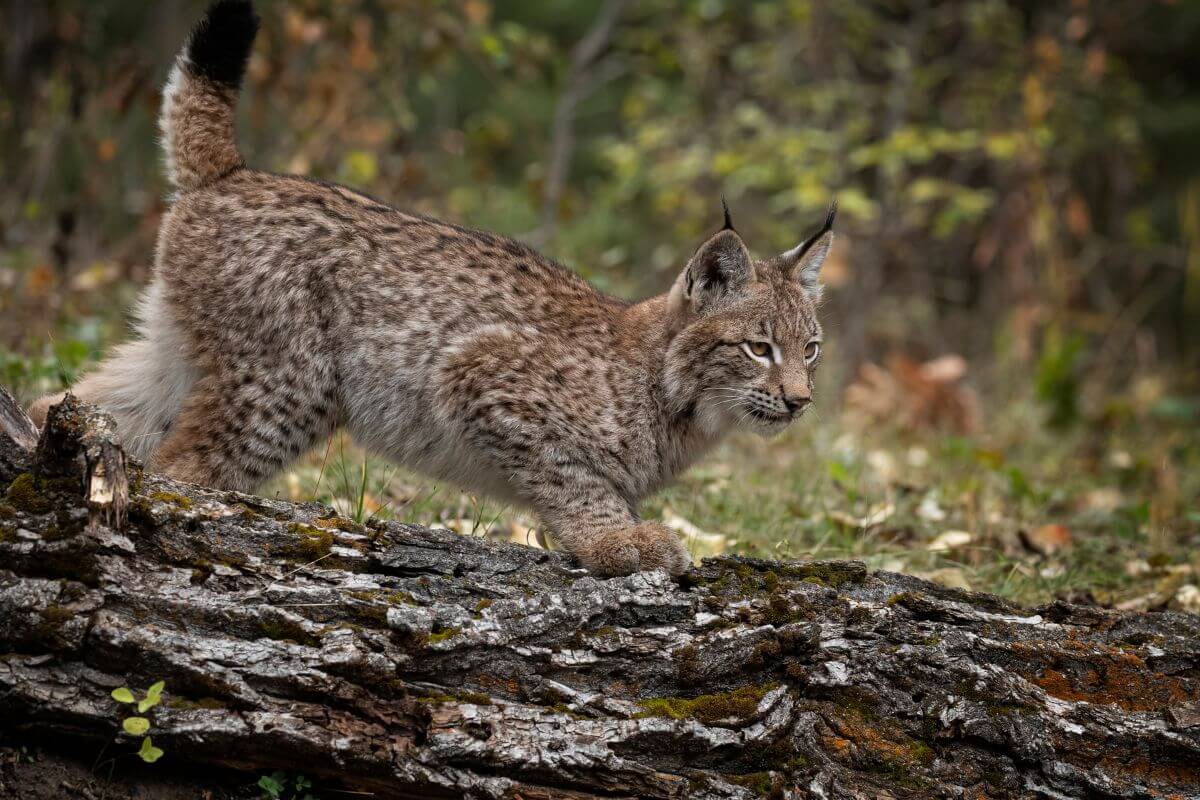
The Montana Lynx symbolizes nature’s perfect adaptation to challenging landscapes. Its tufted ears and keen eyes reflect its ability to thrive in the state’s rugged terrains. By recognizing and preserving the lynx’s habitat, we can help ensure their continued existence.
This beautiful cat faces unique ecological challenges in Montana. It relies on its hunting flexibility and the female lynx’s reproductive resilience to navigate changing prey populations. Conservation efforts emphasize Montana’s commitment to protecting this iconic species.
Whether glimpsed in the vast Glacier National Park or admired at ZooMontana, every encounter with a lynx reminds us of the importance of coexisting with and safeguarding our natural world.
Montana Lynx FAQs
1. Are There Lynx in Montana?
There are lynx in Montana and they inhabit the forests and mountainous regions of the state. They are particularly in areas with dense coniferous forests where they can find their preferred prey, such as snowshoe hares.
2. What Is the Difference Between a Bobcat and a Lynx in Montana?
In Montana, bobcats and lynx are both wildcats, but they have some notable differences. Bobcats are smaller and more common throughout the state, with shorter tufted ears and fur that tends to be spotted or streaked.
Lynx, on the other hand, are larger with longer legs and distinctive tufted ears. They primarily inhabit the northern and western parts of Montana.
3. Are Lynx Protected in Montana?
Lynx are protected in Montana. They are listed as a threatened species under the Endangered Species Act in the contiguous United States. This protection helps conserve lynx populations and their habitat.
4. Can You Hunt Lynx in Montana?
You cannot hunt lynx in Montana. Lynx are protected under state and federal law, and hunting or trapping them is strictly prohibited. They are listed as threatened under the Endangered Species Act, and hunting them is illegal to ensure their conservation.
5. How Many Lynx Are in Montana?
The lynx population in Montana is believed to be closer to around 300 individuals. However, population estimates for lynx can vary and are subject to ongoing monitoring and research efforts.
Dive into articles exploring the beauty of Montana:

